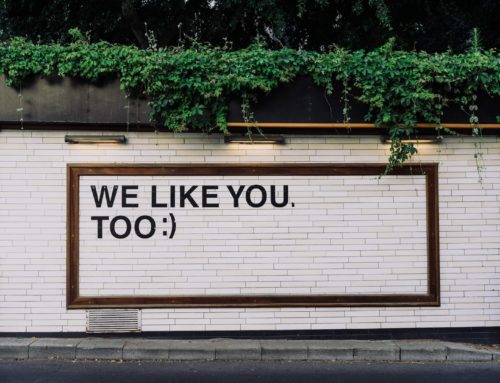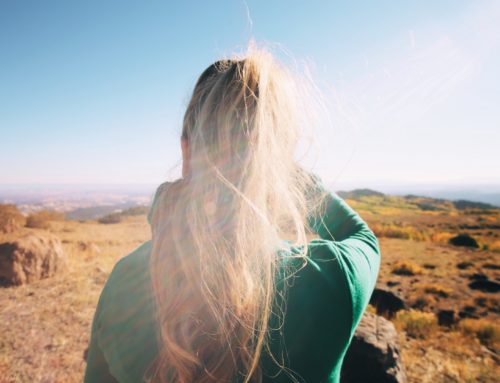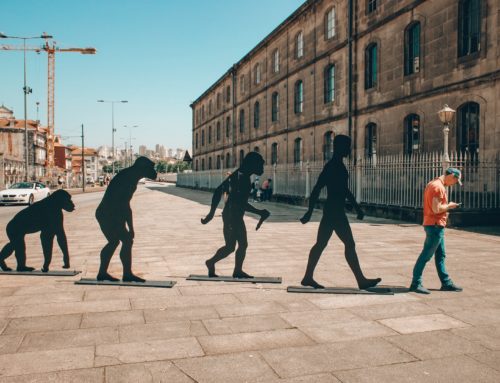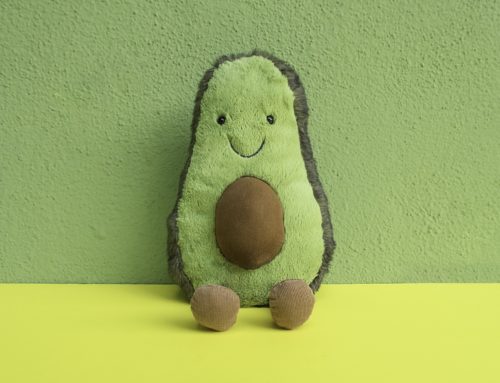When I was 5 years old, I remember being afraid to go up to the counter at Chickfila and exchange my kids book for a vanilla soft-serve ice-cream cone. It’s the first thing I can consciously rememeber being afraid of. I didn’t want to be alone, I didn’t want to do something wrong, and I certainly didn’t want this to set a precedent with my parents — after all, being 5 years old had a lot of perks, and not being responsible for myself was largely one of them.
I remember my mom saying to me, “they’re just a person, just like you or me, and the worst thing they can say to you is no.”
Well damn, when you put it like that mom.
But she was right — not just in what she was saying to me — but in knowing exactly what I needed to hear at that particular moment in time as I found my kid self at the crossroads of a very scary decision. Somehow knowing that the only two possible outcomes of this venture were the person at the register either saying ‘yes,’ and rewarding me with my treat, or saying ‘no,’ and leaving me empty handed. Suddenly, it became a risk I was willing to take — I could handle not getting an ice-cream if that was the worst possible thing to come from it, I thought.
Spoiler alert: I got my ice-cream.
When I think back on the moments throughout my life that felt very scary at first, only to give way to a plethora of positive outcomes, shortly thereafter, I am reminded that what might look formidable and fear-inducing as it approaches, all too often takes on a softer, non-threatening appearance through the rear-view mirror of hindsight. In other words, I’m no longer afraid of going to the counter all by myself, nor of the 1000’s of other things the once made my heart speed up, my palms sweat and my voice start to tremble at the thought.
I once had it explained to me that everything you currently have in life, whether its your job, your house, or the friendships you currently maintain are inside of your comfort zone. Logically, then, it follows that everything you want but don’t currently have, exists in the space outside of that zone. With a basic math equation, it becomes clear that in order to attain the things you want, and to improve the life you’re living, there is, and always will be, the requirement of stepping outside of your comfort zone. Woah.
Now, I’m not here to tell you that every opportunity to face your fears is going to be as simple or straightforward as ordering ice-cream for the first time, but I am trying to say that it’s worth it — irrevocably, and unequivocally — it will always be worth it.
On Fear
Fear is built into our evolutionary hard-wiring as human beings. Fear is what keeps you alive, keeps you sharp, and keeps you fighting for the life you want to have. Fear is not an enemy, it’s a superpower.
The idea that you should be striving to reach a point of fearlessness is flawed for more than one reason. Firstly, it’s not possible — we live in rapidly evolving world with a near-constant onslaught of challenges and fears that have the capacity to surface with less than a moment’s notice. Life is scary and the sooner you accept that fact, the less power life has to scare you with. By examining the things that terrify you the most in the light of day instead of allowing their shifting shadows at night to paralyze you with the fear of the unknown, you reclaim ownership of your own psyche.
Secondly, fearlessness is not something to aspire to, even if it were possible to one day achieve. If you were truly fearless, you’d have nothing to gain, or learn from, or grow with. Your comfort zone would include everything under the sun and it would be a rude wake-up call when you realized that life isn’t about having things, it’s about doing things.
Facing your fears is just that — facing them. It’s looking them in the eye and having a conversation with them. What are they there for? When did they get there, exactly? And what’s the worst thing that could happen if we were to run towards them?
Heart speeds up, palms start to sweat, voice trembles? That’s awfully predictable, fear, I thought you were more dreadful than that.
Learn to recognize the signs of fear and use them to evaluate the situation at hand. These are your options:
Option A: Fear that is there to keep you safe. Pay attention to your surroundings and get yourself out of all immediate danger. Look both ways when you cross the road, don’t walk alone at night, or leave your drink unattended, and don’t climb into the lion enclosure at the zoo. This is real fear, let it ring loudly in your prefrontal cortex and guide you to safety.
Option B: Fear that is there to illuminate an uncertain path — a road not yet taken. Stay alert and aware of your surroundings, by all means, but trust yourself to handle the situation. This is the fear you must overcome, the inner child scared of asking for their ice-cream. Let it hold your hand as you assure it, that even though new can be scary, it doesn’t make it bad. Calm your beating heart, and steady your shaky voice — tell fear, thank you, but you got this — and then give it all you got.
On Fear in 2020
I can’t speak for everyone else when I say this, but I derive a great deal of reassurance from examining the worst-case scenario of any given situation. It’s a complex thing to really think about, because on the one hand it has the potential to make me realize that i’m just being silly, and there’s not so much that could go wrong, at the moment.
On the other hand — especially as a result of way the world has felt infinitely more confusing, unpredictable, and exhausting this year, in particular — I’m left with the understanding that things also have the potential to go horribly, horribly wrong.
Life is so incredibly precious, and tomorrow is never guaranteed. People in all four corners of the earth are experiencing suffering and heart-ache in ways I am lucky enough to have never experienced for myself. There are hate crimes, and natural disasters, and a media culture that seeks to divide people based on their preference for a presidential candidate in a time when a failing political system should matter least of all.
The point here being, that there are so many very real things in this life to be afraid of — but I don’t want the fear of living to be one of them. In fact, if nothing else, this dire worst-case-scenario way of thinking is what inspires and encourages me to face the things that scare me even more adventurously.
It’s the notion that if everything were to completely go wrong, and if the world, as we knew it, was coming to an untimely end, that I would know I didn’t let it get the best of me —simply, because that’s exactly what facing your fears means.
I don’t want to hold myself back — even for a second — from the things that might one day bring me the most joy. I don’t want to be afraid of talking to strangers, or asking for ice-cream, or failing so hard that I’m forced to dust myself off and rememeber why I took the leap of faith in the first place.
Because, when it really comes down it, a life with a scoop of hard-earned vanilla ice-cream is a whole lot sweeter than one without it, and if the worst possible thing to come from taking the risk is learning to live without the ice-cream — certainly no worse off than before — then I think I can handle it.
On The Second Step
I see you, I hear you, fear, and I’m choosing to ignore you because I’m not here on this planet to bow down to the fear of the unknown.
The second step is just the process of accepting that there will, indeed, always be things to be afraid of, but that more often than not, fear is just an illuminating beam of light on all the things that lie just outside of our comfort zones.
And comfort was never a very good excuse for anything.





